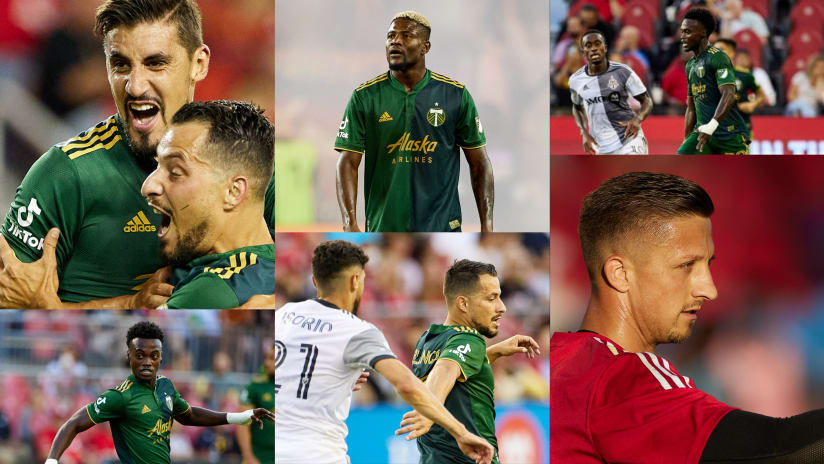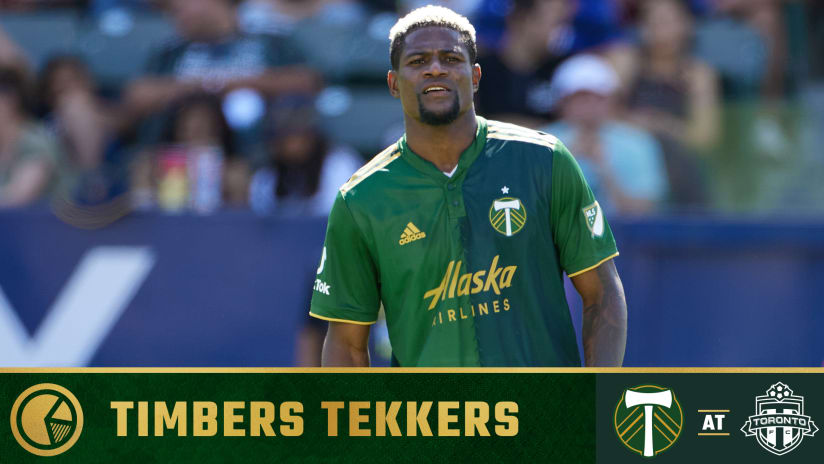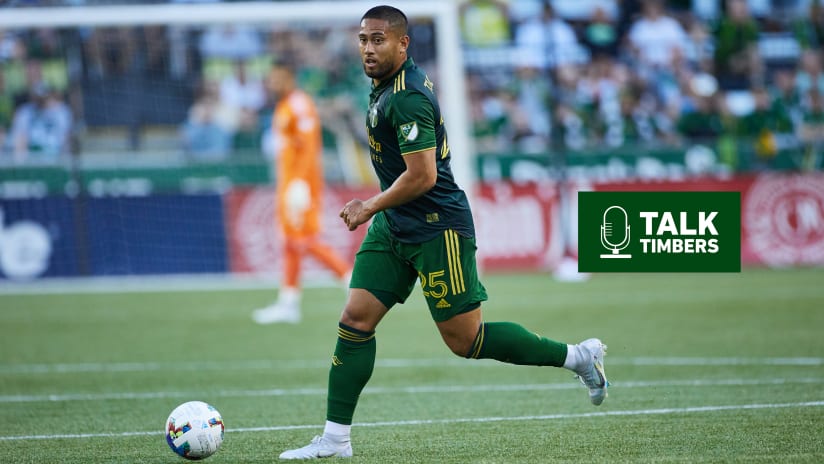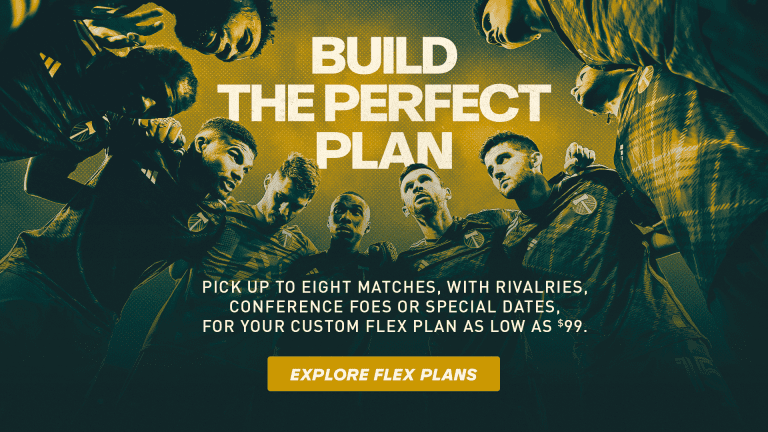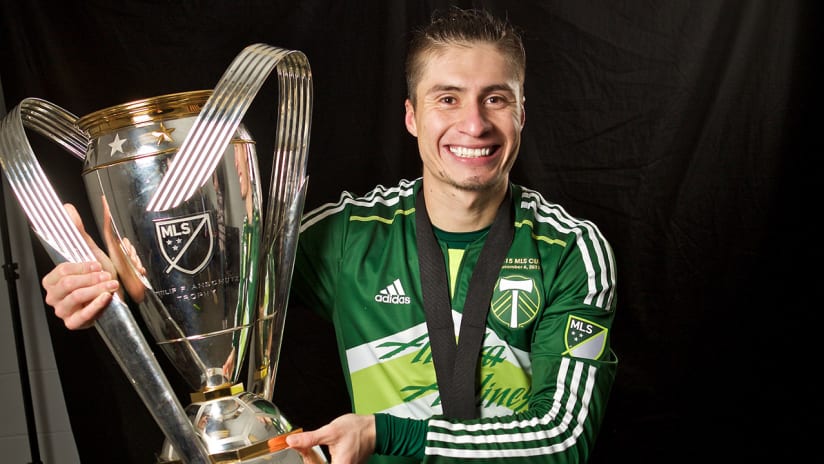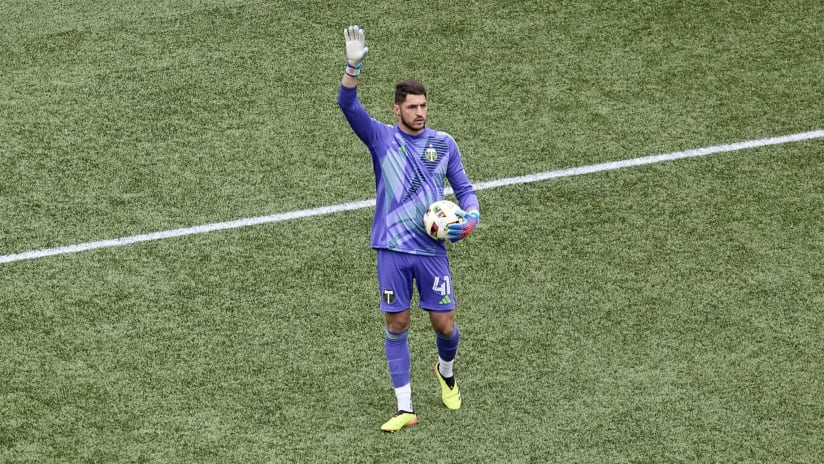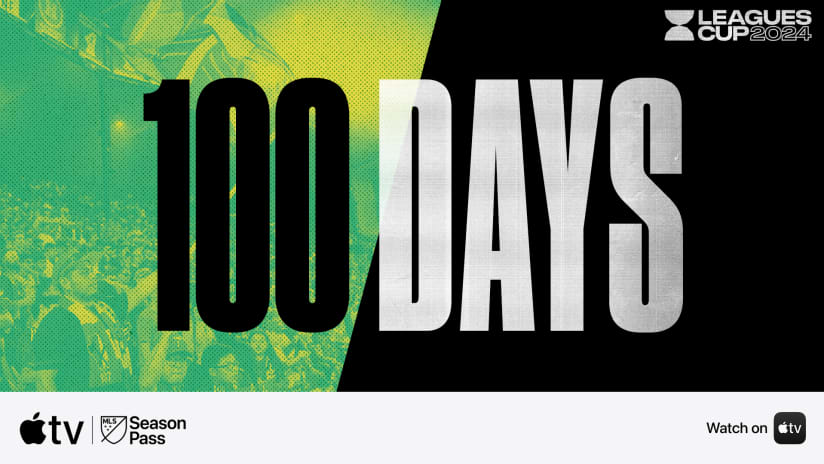PORTLAND, Ore. – “Portland-Seattle didn’t need MLS. MLS needed Portland-Seattle.”
As much as anybody, Taylor Twellman would know. ESPN’s lead soccer analyst is one of the most successful goal-scorers in Major League Soccer history, accumulating 101 goals across eight years with the New England Revolution. His roots in the American game go even deeper, beyond his 30 international appearances, back to when his father and two of his uncles played in the old North American Soccer League.
Twellman is both legend and legacy in U.S. soccer, and when it comes to the league he called home, he’s seen the changes, the biggest of which arrived in earnest in 2011.
“The league isn’t where it is today without Portland-Seattle,” he explains. “Whether it’s the urban communities, or the organic hatred between both fans, or the organic hate between both cities. The history. The stories. The passion. You could use every single word, but the reality is, the one word that matters is history. There’s history.”
Ninety-nine games of history, in fact; benchmarks in a rivalry that extends back to May 2, 1975. From the original NASL through years as league vagabonds – with games in the Western Alliance, Western Soccer League, American Professional Soccer League, A-League and United Soccer League – Portland and Seattle have accumulated over four decades worth of animus and folklore, part of the reason it’s return to the top flight seven years ago changed the face of Major League Soccer. Sunday's match at Providence Park marks the 100th all-time meeting between the two clubs (1pm PT, ESPN).
Those changes go beyond the history the teams brought to the league. The fan culture the Timbers Army as well as Seattle’s various supporters’ groups brought back to the first tier added a dimension MLS had largely missed over its previous decade-plus. In turn, the atmospheres at Providence Park and CenturyLink Field gave MLS an element it’d lacked, creating not only a more viable television product but an environment that boosted MLS’ reputation across the world. An expansion boon followed Cascadia’s arrival to Major League Soccer, while the atmospheres around Providence Park and CenturyLink created a new vision for what MLS’ gameday experience could become.
It is difficult to remember what MLS was like a decade ago, before Seattle joined the league. Such is the impact Cascadia’s teams have had on the young circuit. And going forward, it’s impossible to imagine MLS’ growth without seeing the lessons it learned from the arrivals of Portland and Seattle.
“You’re not having to make this stuff up anymore”
It all starts with history, though, something the 13-year-old league lacked in abundance when the Sounders rose to MLS in 2009. When Portland and Vancouver joined Seattle two years later, MLS had its first rivalry that had a true, historic element.
“Growing up in D.C., I felt like there was really, in the early days of MLS, one or two big rivalries …,” Paul Tenorio remembers. Tenorio has covered MLS for the Washington Post, Orlando Sentinel, and FourFourTwo and has followed the league since D.C. United’s dominance in MLS’ first years, from 1996 on. Still, even while watching United’s rivalry with the New York/New Jersey MetroStars (later to become the New York Red Bulls), Tenorio sensed something was missing.
“There was some real vitriol that went back and forth between those two clubs,” he explained, “and they had the Atlantic Cup, but I felt that MLS lacked some of the geographic rivalries that we know across all sports, both here in this country and in Europe, as well.”
It also lacked the crowds, which Seattle supplied in mass, going on to lead MLS in attendance eight years in a row. It lacked the depth of fan culture that could fill an entire stadium’s stand, singing for 90 minutes as if their supporting identity depended on it. It lacked atmospheres like you see in Portland’s Goose Hollow and Seattle’s SoDo district in the hours – or, in Portland’s line culture, days – before games. Before 2009, MLS’ was a suburban soccer culture, where the highest annual attendances were topping out at just over 26,000 per game.
“Then along comes Portland and Seattle,” Steve Davis, a journalist who has covered the league for ESPN, Sports Illustrated, NBC Sports, and FourFourTwo, remembers, “and you’re not having to make this stuff up anymore. It’s a real rivalry, and people see the genuine nature of it. It makes it real for not just people in the Pacific Northwest, but it makes it real for anybody who happens to tune in on a random night when CenturyLink is hopping or the big tifo is going up at Providence Park.”
This wasn’t just fan bases responding to MLS. Sure, a lot of people began coming to games because the Timbers and Sounders were back in the first division, but even in the old NASL, Portland and Seattle drew. An average of 17,899 attended the team’s derbies between 1975 and 1982. Even in the years before MLS, the crowds were there, with the teams’ games averaging 12,843 supporters in their five meetings before Portland jumped back to the top level.
“The atmosphere and culture is something that, in this rivalry, with these two teams, is authentic, and in certain areas, it’s generational,” ESPN’s lead producer for MLS broadcasts, Matthew Leach, said. “That’s something that hadn’t really existed. Now, with New York-New York, and even this new LA-LA, parents and kids are growing up with it, more. They’re watching it develop, here. They’re handing it down a generation, to their children. It’s something that’s there, and it’s real.”
That commitment, and the culture around it, has spread throughout Major League Soccer. The year before Seattle joined the league, MLS averaged 16,460 fans per game across 210 contests. Last season, MLS games averaged 22,113 fans, with most stadiums housing supporters’ sections that have inherited attributes from their Cascadia counterparts.
“You go across to these other places, tifo is obviously huge in this rivalry. Now you see them in other games,” Leach said. “We saw one this past week in New York. Orlando City, with their supporter culture. A lot of that was derived from fan groups who, watching Seattle and watching Portland, have taken parts of others’ identity to build their own identity. That’s what [Portland and Seattle] brought to the league.”
“It’s hard to remember Major League Soccer before Portland-Seattle”
How that culture translates to television has transformed MLS’ product. Before Cascadia’s arrival, MLS had supporters’ groups, most prominently with D.C. United, who’ve had a number adorn RFK Stadium’s stands throughout the team’s existence. On broadcast, though, the effect was often muted, leaving most MLS games without the elements we’ve come to expect from the league’s current, more mature product.
“As someone that played in that league before,” Twellman remembers, “you had a couple of memories, here or there. Most of them, for me, were MLS Cups. Great crowds, obviously, rivalries that we had at RFK, when it was packed, or when David Beckham started to play, and LA was successful …”
Very few of those highlights come up, now, in the ubiquitous hype reels that show what MLS has to offer. Beckham? Yes. Even after his retirement, he’s still a major part of MLS’ brand. But pull up a game from ten, 15 years ago, and the atmosphere doesn’t even look anything like MLS’ product.
“I don’t think it’s unfair to say it’s hard to remember Major League Soccer before Portland-Seattle,” Twellman said.
“What broadcasts are built around are stars, stories and then the scene,” Davis shared. “Beckham gave them the stars, and other stars came along. The stories, we know are the players but also the rivalry. And then the scene, go look at Providence Park, or go look at CenturyLink, and tell me that’s not an unbelievable scene.”
Those scenes have translated to the numbers. According to ESPN, games between Portland and Seattle have drawn 19 percent higher ratings, on average, than other MLS broadcasts, since 2015. That is for games on the network’s main channel, ESPN. On ESPN2, there is a 35 percent bump when the Timbers and Sounders take center stage.
“From a national TV perspective, when you show up, and the energy is like it is in Providence Park, or in Seattle, it naturally gets through to the television audience,” Leach explained.
“The big thing on the broadcast that we talk about is trying to welcome in the casual fan who may be passing by. And that’s something that grabs a casual fan. It’s something that grabs a viewer, brings them in to stick around a little while longer and see what’s going on. And the longer they can take in some of that atmosphere and stay with us, the more that they can get hooked into what happens on the field.”
Internationally, too, the rivalry has had a huge effect. Prior to being able to market Portland-Seattle, MLS’ international appeal was tied to Beckham, with tune-in audience likely curious about this new frontier for the world’s biggest sports star. With Portland and Seattle, broadcasts could sell something that actually paralleled the atmospheres, motivations, and experiences fans had in their own parts of the world. It wasn’t about one person’s name, anymore. It was about the actual product.
“These are the matches that everybody knows about because of the rivalry, what’s at stake,” Timbers head coach Giovanni Savarese, a native of Venezuela, said. “It shows that the fans here, in this league, can be very passionate. They understand what they’re seeing. It’s like what proper soccer should be. It’s fantastic.
“This is a rivalry that goes beyond MLS. It’s already known worldwide, for sure.”
“The radio and the people that I talk to at home [in England], they’re starting to get it,” Timbers defender Liam Ridgewellsaid. “It’s difficult, because they see [the cities] as so far apart. How can you be a rivalry with someone you don’t see every day in the street? But they’re starting to get it. Watching the games, listening to how people talk, listening to how the crowds are, they get how big a rivalry it is.”
Even in places that don’t have the same cultural connections that exist between the U.S. and England, Portland-Seattle is forging new ground, both via rivalry and via the stars the rivalry has drawn.
“Every year, we have more games on TV in Argentina,” Timbers midfielder Diego Valeri explained. “They really like it. They are impressed with the passion and the environment of our derby.”
It’s one of the many ways Portland-Seattle has not only pushed the league out of its initial, 1.0 growing stage into its 2.0 growth and -- with the new arrival of the Atlanta United FC, New York City FC and Los Angeles FC -- the third phase of MLS. The league has grown from the 14-team circuit which, rebounding from its early 2000s setbacks, welcomed Seattle in 2009. As Portland welcome the Sounders on Sunday, MLS stands at 23 teams, has confirmed two more, and is intent on adding another three in the near future.
“Those two markets absolutely had an impact on other expansion markets”
It’s difficult to imagine that boom happening without Portland and Seattle’s presence. Prior to their arrivals, MLS had expanded into Salt Lake City (Real Salt Lake), Los Angeles (Chivas USA) and Toronto (Toronto FC). Two of those franchises not only remain in the league but are among MLS’ strongest. In Portland and Seattle, though, the league got two distinct, persuasive blueprints that accelerated its first true phase of growth.
“Seattle was really the first market to show that MLS could pull in NFL-sized crowds …,” Tenorio said. “It told the general public that MLS can have a real hold in an American market in ways that the league really hadn’t seen before.”
The biggest benchmark of Seattle’s off-field success may have come last season, when, for the first time since 2008, the Sounders didn’t lead the league in attendance. The 48,200 average Atlanta United put up in their inaugural season may have knocked Seattle off its perch, but it was a record built on the shoulders of giants. Seattle was the Bob Beamon of MLS attendance. Somebody was bound to leap past them, at some point, but it took a long time to do so.
Portland’s stadium capacity meant they could never compete with their rivals in terms of crowd size, but with the Timbers’ sellout steak (127 and counting), long season-ticket waiting list (over 13,000), and market relevance, the team provided a different model new franchises could follow.
“I can tell you there was a direct link between Orlando and Portland …,” Tenorio said, having had a front-row seat for one of the five new teams that have joined MLS since the Timbers and Whitecaps’ arrivals. “[Orlando City SC] felt like Portland was the perfect comparison with the Orlando market. Having a basketball team, the size of the city and the demographic makeup of the city.
“When the franchise was making presentations to government in Central Florida in Orlando and Orange County, the success of Portland directly played into those presentations and giving confidence to those politicians believing in a Major League Soccer team - that it could be successful. There is no doubt the success in those two markets absolutely had an impact on other expansion markets come into the league since then.”
“Portland-Seattle came in, and everyone realized, wait, this needs to change”
Orlando City’s new, downtown stadium may be the biggest part of their Portland vision – an aspect to the Timbers and Seattle’s contributions that can’t be seen on a television screens, in MLS’ international appeal, or in the tifo that get lifted from each teams’ supporters’ sections. The idea that MLS could be an urban experience and mimic the environments that we see in major cities across the world was something few conceived of before Cascadia came on board. Now, it’s part of the league’s playbook.
“I don’t think people realize outside of Portland-Seattle how important that is, but single-handedly Portland-Seattle is why soccer stadiums have to be downtown,” Twellman said.
“When you look at the stadiums that I played in, all of the new stadiums were just where can we could find land,” he explained. “Where can we build a stadium? Portland-Seattle came in, and everyone realized, wait, this needs to change.”
Venues in Chicago, Dallas and Denver – soccer-specific sites that were, years ago, seen as key to solidifying the league’s place on the sports’ landscape – are all situated outside their urban cores, in places where MLS “could find land.” If Portland and Seattle had to build brand-new venues, they may have had to do the same, but in Providence Park and CenturyLink Field, the rivals had homes that enabled a different kind of culture.
“A lot of people equate Portland with being one of the more European-feeling environments,” Tenorio says. “Everything that goes on there. Seattle obviously has elements of that, too. There was a kind of MLS-is-making-it vibe that came out of what these two markets brought to the table.”
Now, stadium is an expansion priority. What is your vision for a new venue? How is it connected to your community? How can does it fit this plan that we know has been so successful in Portland and Seattle?
“The one thing I’m so mad about is that I didn’t get to play in Seattle-Portland”
The element implicit in all these changes, though, is the fans. It’s more than quantity. It’s more than the noise, the smoke, the tifo and the songs that have become requirements in MLS culture. It’s the combination of it all, organically grown over four decades, coming to Major League Soccer at a time when it could still influence the league’s growth.
“That one set the standard for everybody else to follow,” Davis said, of Cascadia’s fan culture. “That one gave everybody not necessarily a blueprint but a picture of what they could be if they could market it the right way, get the stadium location all linked up with the right kind of message, right kind of branding. If you could get it all together, that’s why it could be.”
What it’s become is a rivalry that is mentioned with the biggest in U.S. sports and in the recognition Portland-Seattle gets, the league can see a glimpse of its future.
“I’ve been at ESPN for a while …,” Leach said, “and the ones in every sport that you look at …, you talk about when is Duke going to play North Carolina? When you’re doing Major League Baseball, when are the Yankees going to play the Red Sox? You market your season, or you think about your production enhancement around those benchmark games, and that’s Portland and Seattle.
“That’s the one that even casual fans, even non-MLS fans, but soccer fans, in general, can sink their teeth in. That’s the one. It’s Yankees-Red Sox. It’s Duke-North Carolina. Michigan-Ohio State. Lakers-Celtics. They’re the ones you kind of put a pin in, and that’s what we do with Portland and Seattle.”
Major League Soccer never had that, before. It never had the culture, the reputation, the international appeal it has, now, before Portland and Seattle came along. Their presences changed the league so much, even retired legends look on in awe.
“In all seriousness,” Twellman laments, having retired prematurely after battling concussions, “the one thing I’m so mad about regarding my injury is that I didn’t get to play in Seattle against Portland, and especially Portland, for me, because there is something about that atmosphere.”
On Sunday, the rivalry’s atmosphere will be on display for the 100th time in 43 years. From the heights of the first game in NASL, to the modesty of U.S. soccer’s lower levels, to its renaissance in MLS, the lore of Portland-Seattle has only grown.
Now, seven years into its new context, U.S. soccer’s greatest rivalry has proven more than a battle of two clubs. It’s forever changed the course of Major League Soccer.


